#white-throated redstart
Explore tagged Tumblr posts
Text

Birds from my trip to Georgia
#artists on tumblr#original art#birds#photoshop#birdblr#birding#bird art#birdwatching#eastern bluebird#eastern towhee#eastern tennessee#american goldfinch#pine warbler#carolina wren#american robin#eastern phoebe#Blackbird#american redstart#white throated sparrow#Bird art
96 notes
·
View notes
Text
BIG BIG day for birding!!! My lastest lifers:
1. Bay-breasted Warbler
2. Magnolia Warbler
3. Black-throated Green Warbler
4. Blackburnian Warbler
5. Canada Warbler
#i have had dreams like this and it legit staggered me for it to be REAL#just all the birds! flitting around in one tree! being astonishing and colorful!#the blackburnian was legitimately the most beautiful bird i have ever seen#there is nothing like the color of that THROAT!!!#not lifers but there were also yellow warblers an american redstart some empid and an entire adorable family of tufted titmice#and a black and white warbler!#if i could've been sure i saw a tennesse warbler and a blue-headed vireo i would have had two more lifers#but i like to be very sure#oh spring migration you are something else
3 notes
·
View notes
Text
Favorite Bird Photos of September '24
“Beside them the birds of the heavens dwell; they sing among the branches. From Your lofty abode You water the mountains; the earth is satisfied with the fruit of your work.” Psalm 104:12-13 Yellow-billed Cuckoo Eastern Bluebird (fledgling) Eastern Bluebird Brown-headed Nuthatch Black & White Warbler Ruby-throated Hummingbird Ruby-throated Hummingbird Cape May Warbler American…

View On WordPress
#American Redstart#bird photography#Birdwatching#black and white warbler#brownheaded nuthatch#butterflies#cape may warbler#cooper&039;s hawk#eastern bluebird#gulf fritillary#hawks#hummingbirds#migratory birds#North Carolina#nuthatches#raptors#red-whouldered hawk#ruby-throated hummingbird#scarlet tanager#warblers#yellowbilled cuckoo
0 notes
Text
Winged F1
I have to give loads of credits to @eggbreadboi and their wings!AU (which is just BREATHTAKEING) i was VERY heavily inspired so
(this is for the current drivers on the grid others may follow in another post)
i'll put other Options i thought of in […]; How i came to each decision of what bird (or well rather the wings specifically) i choose for each Driver is based on where they are from etc. to kind of have a better overview and to make it a little easier to come to a decision [i am very open to any other suggestions tho!!!] but also what I thought suited them, sometimes also just cus i thought the wings would look cute on them (lol) and the most important also like flying style wise
also other drivers not currently on the grid will get their own list! Also these are just my personal opinions i also might change some in the future or if anybody has any other opinions i am very happy to hear them!!! :]

Oscar Piastri: Pacific Baza [Galah Bird, Sulphur-crested Cockatoo]

Lando Norris: Common Kingfisher [Eurasian Jay, Redstart]

Lewis Hamilton: European Bee-Eater [Osprey]

Charles Leclerc: Common Kestrel [Yellow-Legged Gull, Black Redstart]

Alex Albon: Black Baza [Great Hornbill, White-throated Kingfisher]

Carlos Sainz Jr.: Montagu's Harrier [Iberian Imperial Eagle, Griffon Vulture]

Nico Hülkenberg: Grey Heron [Cormorand, Lesser spotted Eagle]

Gabriel Bortoleto: Anhinga [Jabiro, Toco Toucan]

Pierre Gasly: Little Egret [Great Crested Grebe, Common Eider, Northern Wheateater]

Jack Doohan: Wedgetailed Eagle [Eastern Rosella, Great Bowerbird]

Lance Stroll: Snowy Owl [Redtailed Hawk, American Robin, White-throated Sparrow]

Fernando Alonso: Spanish Imperial Eagle [Northern Goshawk, Firecrest]

Esteban Ocon: Barn Owl [Bearded Vulture, Little Egret, Common Shelduck]

Oliver Bearman: Red Kite [Common Buzzard]

George Russell: Common Crane [Marsh Harrier, Ringed Plover]

Kimi Antonelli: Eurasian Treesparrow [European Green Woodpecker, Common Chiffchaff]

Isack Hadjar: Horned Lark [Marnora's Warbler, Western Reef Heron]

Liam Lawson: Silvereye [Bellbird, Brown Creeper]

Yuki Tsunoda: Japanese Sparrowhawk [Longtailed Tit, Eurasian Wren]

Max Verstappen: Common Buzzard [Common Kestrel, Greenfinch, European Herring Gull]
#f1#lists#f1 wings#f1 wingAU#oscar piastri#lando norris#lewis hamilton#charles leclerc#nico hülkenberg#gabriel bortoleto#lance stroll#fernando alonso#yuki tsunoda#max verstappen#isack hadjar#liam lawson#esteban ocon#oliver bearman#pierre gasly#jack doohan#george russell#kimi antonelli#i have a big fat nasty headache now holy shit
20 notes
·
View notes
Text
Birds of Thargelion
After this I just have Maglor’s Gap and that will complete my series on birds in the Fëanorian realms pre Amon Ereb!
Flora, fauna, geography and environment of Arda Masterlist
Thargelion was the realm of Caranthir, located in the north east of Beleriand just north of Ossiriand and bordered by the Ered Luin, the eastern stretch of mountains that divided Beleriand from the rest of Middle Earth
As always this is not a definitive list! Please feel free to ask more or give me a more specific category!
Around Lake Helevorn and the rivers: Red-breasted merganser, mute swan, white tailed dipper, whooper swan, smew, little grebe, red throated loon, common crane, mallard, common white eye, northern shovler, green winged teal, corn crake, spotted crake, black winged stilt
Mountains: bearded vulture, water pipit, golden eagle, kestrel, peregrine falcon, Rock ptarmigan, common siskin, alpine accentor, northern wheatear, ring ouzel, white tailed eagle, chough, spotted nutcracker, Citril finch, griffon vulture, common redstart, common raven, wallcreeper, common jay, boreal owl, white winged snowfinch, crag martin, common redstart, black redstart
Foothills and forests: black grouse, wood grouse, goshawk, grey white fronted goose, hazel grouse, little bunting, meadow pipit, tree sparrow, hedge warbler, Bohemian waxwing, common kestrel, long eared owl, little owl, marsh tit, coal tit, mourning dove, rock pigeon, woodchat strike
World building notes
-Like most of the Noldor in Eastern Beleriand, many of Caranthir’s scouts keep birds of prey. In Thargelion these are primarily peregrine falcons and kestrels. Hunting with birds was less common however.
--There are populations of Green Elves who live in Thargelion, primarily in the mountains and near the border of Ossiriand. Though they also do not use birds for hunting, certain species are kept as companions or messengers.
-Chicken breeding as an art and science developed during the Watchful Peace. Chickens in Thargelion are appraised for long plumage and colorful feathers. Their eggs are eaten but they are not often used for meat.
-Chickens, peacocks and quails were kept by the Noldor of Thargelion, techniques of raising and breeding them were learned from Sindar and Silvan cultures of Eastern Beleriand. Indeed the Noldor of Thargelion were one of the only Noldor populations to keep quails.
-Bearded vultures appear on the crests of some of Caranthir’s lords and were even kept by a few of them
-Feathers of various mountain birds especially eagles and ouzel appear in wood carvings as an architectural motif during the Watchful Peace in Thargelion
-Out of all the Fëanorian realms, water birds appear most often in art and other cultural references in Thargelion as Lake Helevorn and its wildlife are a central facet of life there especially in times of peace. Wading birds like crakes, cranes and stilts are especially Valued.
38 notes
·
View notes
Text
Genus: Myioborus
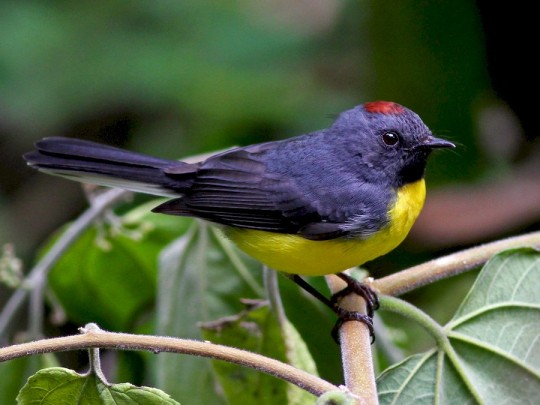
Slate-throated Whitestart (type species)
Ahh the Whitestarts- or... Redstarts? Well- ok, it's a bit of both, really. "Start" is another word for "tail", and as far as optics go, all the birds in this genus have white feathers under their tails. Whitestart should be the name! And by IOC (International Ornithological Congress) standards, this is the case. But, Clements and the American Ornithological Society (AOS) use "redstart" as the common name, which is confusing on multiple levels. First of all, the name was originally given because of the resemblance to the American Redstart, which belongs in Setophaga- but that bird at least has a reddish tail! The second source of confusion is to a number of other "redstart" species which belong to the Muscicapidae family- the Old World Flycatchers. Changing the common name to "whitestart" all around would certainly simplify things, but in some cases tradition supersedes common sense when it comes to bird names.
The genus name translates to "fly eater", from muias for 'fly' and boros for 'devouring'. As far as warblers go, this is fairly common. Originally some European naturalists referred to the wood warblers as flycatchers, based on the jaunty sallies that many of the North American warblers do while capturing their prey and their superficial resemblance to Muscicapidae.
Whitestarts heavily inhabit the northern portion of South America, with some species trailing down the Andes and a few others coming up through Central and North America. The Painted Whitestart reaches into the United States, though just along the southwest border with Mexico. Their typical habitat preferences are mountain forest, woodland, and shrubs.
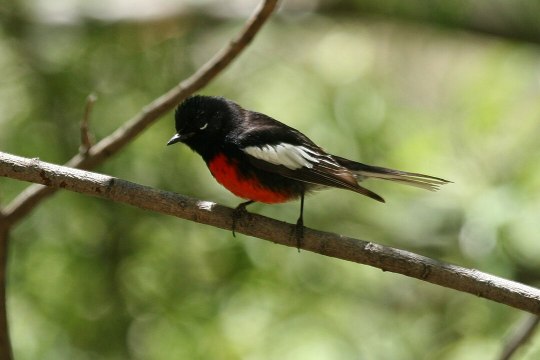
Painted Redstart
(for simplicity sake, I'll continue to use Painted Redstart as this bird's common name. Clements is the source for eBird/Merlin, etc., so most American birders will recognize this as a Painted Redstart, and it's already been featured on the blog as such. For the others, I'll be using 'Whitestart' in the polls, but tagging for both names)
#myioborus#parulidae#passeriformes#new world warblers#wood warblers#songbirds#Genus Feature#(also source links are on the pics)
41 notes
·
View notes
Text
I guess it's time I share my list of birds from this past Jewish year (I've been keeping two Big Year lists, Jewish year and secular year). All are from the US, except the last few which are indicated.
1. Ruby-crowned kinglet
2. American Robin
* Leucistic American Robin
3. Song sparrow
4. Rock pigeon
* Melanistic rock pigeon
5. Chipping sparrow
6. Hairy woodpecker
7. Mourning dove
8. Northern flicker
9. Eastern towhee
10. White crowned sparrow
11. White-throated sparrow
12 Savannah sparrow
13. House sparrow
14. European starling
15. American Crow
16. Common Raven
17. Gray catbird
18. Northern mockingbird
19. Canada Goose
20. Spotted Sandpiper
21. American herring gull
22. Marsh wren
23. Limpkin
24. Great white heron
25. Cattle egret
26. Anhinga
27. Snowy egret
28. Great blue heron
29. Black-crowned night heron
30. Wood stork
31. Common gallinule
32. Blue-gray gnatcatcher
33. Turkey vulture
34. Black vulture
35. Yellow rumped warbler
36. Tufted titmouse
37. Little blue heron
38. White ibis
39. Cooper's hawk
40. Cardinal
41. Green heron
42. Carolina wren
43. Palm warbler
44. Pine warbler
45. Sandhill crane
46. Carolina chickadee
47. Bluejay
48. Osprey
49. Chimney swift
50. Red-tailed hawk
51. Prairie warbler
52. American kestrel
53. Glossy ibis
54. Pied-billed grebe
55. Double-crested cormorant
56. Grey kingbird
57. Brown pelican
58. Fish crow
59. Royal tern
60. Bald eagle
61. Painted bunting
62. American white pelican
63. Common grackle
64. Boat-tailed grackle
65. Great-tailed grackle
66. American purple gallinule
67. American coot
68. Brown-headed cowbird
69. Tricolored heron
70. Mallard
71. Black-bellied whistling duck
72. Eastern kingbird
73. Yellow-billed cuckoo
74. Muscovy duck
75. American bittern
76. Ring-billed gull
77. American Pekin
78. Mallard-Pekin hybrid
79. Eastern bluebird
80. Yellow-bellied sapsucker
81. Red-winged blackbird
82. White-eyed vireo
83. Mottled duck
84. Broad-winged hawk
85. Dark-eyed junco
86. Brown thrasher
87. Sharp-shinned hawk
88. House finch
89. Eastern Phoebe
90. Downy woodpecker
91. Fox sparrow
92. Loggerhead Shrike!!!!
93. White breasted nuthatch
94. Red-bellied woodpecker
95. Brown creeper
96. Pileated woodpecker
97. American goldfinch
98. House wren
99. Barn swallow
100. Tree swallow
101. Black and white warbler
102. Red eyed vireo
103. Yellow warbler
104. Mute swan
105. Rusty blackbird
106. Common yellowthroat
107. Warbling vireo
108. Northern waterthrush
109. Veery
110. Swamp sparrow
111. Wood duck
112. American redstart
113. Orchard oriole
114. Greater Yellowlegs
115. Lesser Yellowlegs
116. Baltimore oriole
117. Hermit thrush
118. Wood thrush
119. Ovenbird
120. Indigo bunting
121. Black-throated blue warbler
122. Scarlet tanager
123. Worm-eating warbler
124. Northern rough-winged swallow
125. Blue-headed vireo
126. Northern parula
127. Prothonotary warbler
128. Philadelphia vireo
129. Blackburnian warbler
130. Magnolia warbler
131. Cedar waxwing
132. Blackpoll warbler
133. Yellow-throated vireo
134. Eastern wood pewee
135. Acadian flycatcher
136. Tennessee warbler
137. Caspian tern
138. Laughing gull
139. Forster's tern
140. American oystercatcher
141. Green-winged teal
142. Purple Martin
143. Least tern
144. Field sparrow
145. Killdeer
146. Grey-cheeked thrush
147. Rose-breasted grosbeak
148. Great-crested flycatcher
149. Swainson's thrush
150. Bay-breasted warbler
151. Chestnut-sided warbler
152. Willow flycatcher
153. Ruby-throated hummingbird
154. Peregrine falcon
155. Hooded crow IL
156. Laughing dove IL
157. Eurasian collared dove IL
158. Eurasian jackdaw IL
159. Common myna IL
160. Rose-ringed parakeet IL
161. White spectacled bulbul IL
162. European bee eater IL
163. Chukar IL
164. Short toed snake eagle IL
165. White stork IL
166. Little egret IL
167. Pygmy cormorant IL
168. Eurasian hoopoe IL
169. Alpine swift IL
170. Graceful pinia IL
171. Eastern Olivaceous Warbler IL
172. Tristan's Starling IL
173. Fan tailed raven IL
174. Eurasian black cap IL
Here's to at least 200 next year!
35 notes
·
View notes
Text
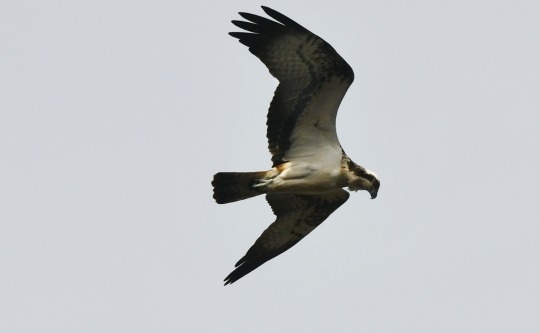
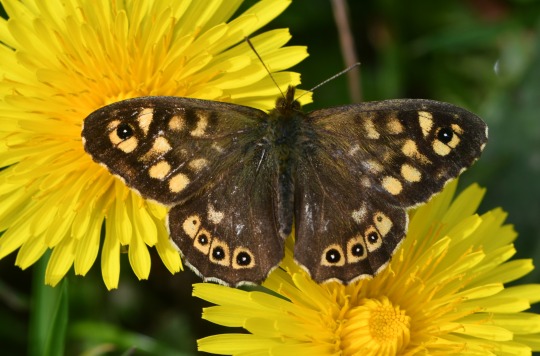
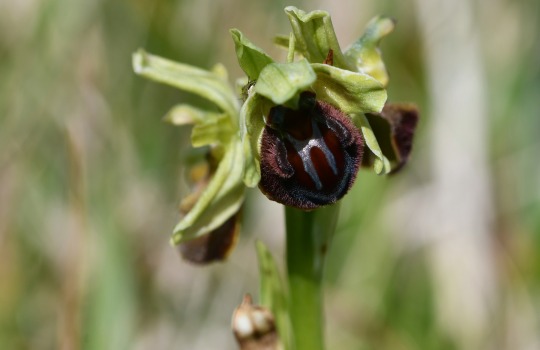
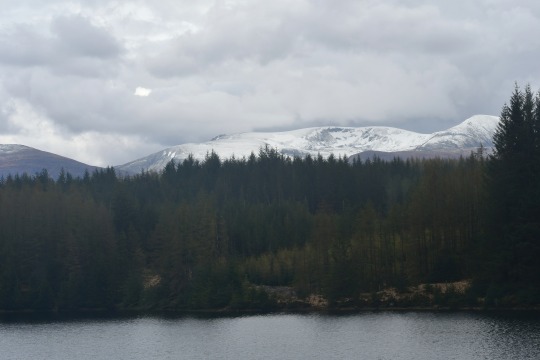
Four of my favourite photos I took in April 2024 and month summary
The photos are of; an Osprey at Lossiemouth in Moray, Speckled Wood on dandelions by Lakeside Country Park in Hampshire, early spider orchid at Durlston in Dorset and view at Laggan Dam.
April was another momentous and splendid wild month for me with so much seen and many amazing places visited. My birdwatching year continued to go from strength to strength with some smashing spring species seen and my year list kept pace with where my others had been at this stage in a year being second only to the number I was on last year my highest ever year list. Spring delights Swallow, House Martin, Wheatear, Whitethroat, glorious Sedge Warbler, Redstart, thrilling views of Guillemot and Fulmar, Little Tern and Common Tern were key species added to my year list this month alongside blockbuster names Osprey and rare Marsh Sandpiper. Avocet, Marsh Harrier, Buzzard, Sand Martin, Goldcrest, Blackcap seen and heard and my first Cuckoos heard this year were other highlights. Following the Lakeside Great Crested Grebes with their four growing chicks and a pair still courting and the new Winchester Peregrine pair was special again this month, as was seeing Greylag goslings and adorable Moorhen chicks at Lakeside. The month ended and the new one began whilst away on the incredible adventure that has been our Scotland holiday; it has been pure, tranquil, joyful and nourishing being out in wilderness areas surrounded and embraced by sensational wildlife both at the amazing cottage we’re staying in and the many fantastic places visited. By the end of April we had already seen many of the standout species of the trip including resplendent summer plumage Black-throated Diver and Red-throated Diver, majestic White-tailed Eagle, exuberant Willow Warblers a very welcome constant, Pink-footed Geese, Red Grouse, Red-legged Partridge, loads of Common Sandpipers, Little Ringed Plover, Knot, Hooded Crow, Kittiwake, amazing views of many Ospreys, Razorbill, Puffin, Common Scoter, Goosander, Goldeneye, Long-tailed Duck, Teal, Wheater, Sand Martin, Yellowhammer, Crossbill, Brambling, White Wagtail, Tree Sparrow, Raven, Skylark, Buzzard, Common Gull, Curlew, Lapwing and Oystercatcher.
It was a massive butterfly month for me too as the peak season moved through the early gears enjoying magical views of Red Admiral, Peacock, Brimstone, Speckled Wood, Small Tortoiseshell, Small White, Orange Tip, Green-veined White, Holly Blue and Wall Brown with many making the most of the wealth of dandelions out the front and at Lakeside. My moth year got going too with White-shouldered House moth at home and bright Brimstone moth at Durlston.
It was a marvellous month of mammals with Hedgehog at home, more Roe Deers in a strong year I’m having for them, Sika Deers on the way to Durlston and Grey Squirrels enjoyed. A massive part of the Scotland trip was exhilarating encounters with mammals, getting some of my best ever views of certain species; inside April this included stunning intimate views of Hares and Roe Deers around the cottage, an amazing moment as a Stoat ran through the garden, a dream encounter watching Bottlenose Dolphins at Spey Bay and Mountain Goats. Bees, spiders, Black and Yellow Cellar slugs and pill woodlouse were other highlights this moth.
Flowers gripped my month of course too as the season really matured with cuckooflower, garlic mustard, wild garlic, early purple orchid, my first ever known sighting of green-winged orchid, early spider orchid, cowslips, bluebells, greater stitchwort, marsh marigold, wood anemone, milkwort, buttercups, lesser celandine, wood anemone, cuckoo-pint, red deadnettle, white deadnettle, yellow archangel, forget-me-not, green alkanet, speedwell and herb-Robert starring alongside the breathtaking dandelion scenes. Vetch, sea and red campion, thrift, hogweed and oxeye daisy (some more than others and largely down to personal perspective) were examples of the cycle of the floral year being slightly ahead again. In Scotland it was interesting to observe spring being slightly behind compared to home with daffodils and primroses still around in numbers among others. It was nice to enjoy the sight of fungi here and there in April including hoof fungus in Scotland.
I enjoyed two great social occasions this month, the Hampshire Ornithological Society’s Member’s Day and a talk from Megan McCubbin based around her book which I thoroughly enjoyed reading earlier in the year. Both were inspirational and eye-opening times where it was great to meet like-minded people something watching the Great Crested Grebes has allowed a lot too. Finally I enjoyed being out and looking out so much in April taking in my surroundings and taking in some wonderful vistas and epic sky scenes. Immersed in the splendour of the vast, open, rugged, mountainous and varied landscape in Scotland also including wetland, coast and forest we enjoyed some incredible and breathtaking views.
#early spider orchid#durlston#dorset#laggan dam#scotland#england#osprey#speckled wood#dandelions#flowers#birdwatching#birding#bird#butterfly#birds#butterflies#great crested grebe#white-tailed eagle#red admiral#2024#april#wildlife#photography#marsh marigold#nature#reflections#europe
14 notes
·
View notes
Text
Costa Rica 2025 - Santa Elena, Curi-Cancha & Monteverde
In the quest to achieve Bird (i.e. see a Quetzal) we took a white-knuckled drive up to the mountains and stayed in Santa Elena. I have a fear of heights which was re-realised on this particular drive.

I got up incredibly early (this was not a trip for sleep) and saw a ton of birds and local wildlife at Curi-Cancha National Reserve with our wonderful guide. I dont know how they spot some of these animals under a million leaves like 20 yards away. There are many blobsqatches and blorbs but some of the photos turned out surprisingly well. Below is a blue tanager, white-faced capuchin monkey, northern emerald-toucanet (same one 3 angles), lessons motmot, slate-throated redstart, toucan, crested guan, a hummingbird of some description that I took a photo through my tiny binoculars with, and a coati. (Among many many others.)












And of course a QUETZAL!!!!!!


That evening we did the night tour and saw a bioluminescent mushroom, many sleeping birds (silver throated tanger & highland tinamou), an oligo (see blob photo) and snail eating snake.









I finished up the trip at the Monteverde Butterfly Gardens, which featured a ton of different insects and, of course, butterflies.
0 notes
Text
Bhutan Birding Tours Packages: Explore the Avian Wonders of the Himalayan Kingdom
Bhutan, a mystical land of breathtaking landscapes and rich biodiversity, is a paradise for birdwatching enthusiasts. With its pristine forests, diverse ecosystems, and high-altitude habitats, Bhutan is home to over 700 bird species, making it a premier destination for birding expeditions. Whether you are an avid ornithologist or a casual nature lover, Bhutan Birding Tours Packages offer an unforgettable experience filled with rare sightings and picturesque surroundings. Orrog, a leading Bhutan Travel Agency, provides expertly crafted Bhutan Tour Packages that combine adventure, culture, and nature for a truly immersive journey.
Cultural Tours in Bhutan
Why Choose Bhutan for Birding?
Bhutan's commitment to conservation and its status as a carbon-negative country make it an exceptional destination for birdwatching. The country’s dense forests, alpine meadows, and river valleys provide shelter to both resident and migratory bird species. Birding Tours in Bhutan take you to some of the most renowned birdwatching hotspots, where you can observe rare and endemic species like the Black-necked Crane, Satyr Tragopan, Himalayan Monal, Ward’s Trogon, and Rufous-necked Hornbill.
Best Birding Locations in Bhutan
1. Phobjikha Valley – The Black-necked Crane Sanctuary
Phobjikha Valley, a glacial valley in central Bhutan, is one of the most important birding sites in the country. Every winter, the endangered Black-necked Crane migrates from Tibet to this serene valley, making it a must-visit destination for birdwatchers. The valley’s wetlands and meadows also attract other bird species such as the Eurasian Woodcock, White-bellied Redstart, and Spotted Laughingthrush.
2. Bumdeling Wildlife Sanctuary – A Haven for Migratory Birds
Located in northeastern Bhutan, Bumdeling Wildlife Sanctuary is an excellent site for birding excursions. It is a key breeding ground for Black-necked Cranes and other high-altitude birds. Birdwatching here allows visitors to spot the Beautiful Nuthatch, Yellow-rumped Honeyguide, and Pallas’s Fish Eagle.
3. Jigme Dorji National Park – Bhutan’s Largest Protected Area
Jigme Dorji National Park, covering almost 4,300 square kilometers, is home to an incredible variety of bird species. Trekking Tours in Bhutan often pass through this park, where birdwatchers can see species like the Himalayan Griffon, Satyr Tragopan, and Fire-tailed Sunbird. The park also offers stunning views of snow-capped peaks, adding to the overall experience.
4. Zhemgang – The Birding Paradise
Zhemgang, in central Bhutan, is one of the richest birdwatching regions. It is particularly known for sightings of the Rufous-necked Hornbill and the White-bellied Heron, one of the rarest birds in the world. Bhutan Birding Birdwatching Trips Excursions to Zhemgang provide birders with opportunities to witness diverse avian species amid lush forests and traditional villages.
5. Royal Manas National Park – A Biodiversity Hotspot
Royal Manas National Park, the oldest national park in Bhutan, is a must-visit for birdwatchers and wildlife enthusiasts. It is home to an astonishing variety of birds, including the Great Hornbill, Green Magpie, and White-throated Kingfisher. Birding tours here often include safaris and river excursions, allowing for a comprehensive birdwatching experience.
What to Expect from Bhutan Birding Tours Packages?
Orrog’s Bhutan Birding Tours Packages are designed to offer the best birdwatching experiences while also providing cultural and trekking adventures. These packages typically include:
Guided Birding Excursions: Expert naturalists and birding guides accompany you to Bhutan’s top birdwatching locations.
Cultural Experiences: Combine birdwatching with Bhutan Cultural Tours, visiting monasteries, dzongs, and traditional villages.
Trekking and Hiking Adventures: Experience Bhutan Hiking and Trekking Experiences Packages as you explore the bird-rich trails of Bhutan’s national parks.
Festivals and Celebrations: Time your visit to coincide with Bhutan Festival Tours to witness the vibrant traditional dances and ceremonies.
Customized Itineraries: Tailor-made Bhutan Tour Packages that cater to your birdwatching preferences and travel style.
Combining Birdwatching with Bhutan’s Rich Culture
While Bhutan Birding Tours Packages focus on exploring the avian wonders of Bhutan, they also offer a glimpse into the country’s rich cultural heritage. Visitors can participate in Bhutan Cultural Activities such as traditional mask dances, butter lamp offerings, and Bhutan Religious Heritage tours, making their journey even more enriching.
Bhutan Sightseeing Adventures also include visits to iconic landmarks like Paro Taktsang (Tiger’s Nest Monastery), Punakha Dzong, and the ancient temples of Bumthang. By blending nature and culture, these packages ensure a holistic experience of Bhutan’s unique charm.
Best Time for Birding in Bhutan
The best seasons for birdwatching in Bhutan are spring (March to May) and autumn (September to November). During these periods, migratory birds arrive, and many resident birds are in their breeding plumage, making them easier to spot and identify. Winter (November to February) is the best time to witness the arrival of Black-necked Cranes in Phobjikha Valley.
Sustainable Birdwatching in Bhutan
Bhutan’s eco-tourism policies ensure that birding tours are conducted responsibly. Orrog follows sustainable tourism practices, ensuring minimal environmental impact while maximizing conservation efforts. By choosing Bhutan Birding Tours Packages, visitors contribute to local conservation projects and help protect Bhutan’s fragile ecosystems.
Book Your Bhutan Birding Tour Today!
Whether you are an experienced birdwatcher or a beginner, Bhutan offers unparalleled birdwatching experiences in one of the most pristine environments on earth. With Orrog’s expertly crafted Bhutan Birding Birdwatching Trips Excursions, you can explore the natural beauty and diverse bird species of Bhutan while immersing yourself in its rich cultural heritage.
See more:-
bhutan tour packages, bhutan travel packages, bhutan holiday packages
Birding Tours in Bhutan, Bhutan Birding Tour Packages, best birding tours in Bhutan, birdwatching trips in Bhutan, bird watching excursions in Bhutan
Cultural Tours in Bhutan, culture trips in Bhutan, cultural activities in Bhutan, Cultural Sightseeing Adventures in Bhutan, Religious Heritage Tours in Bhutan
0 notes
Text
propaganda under cut
SETOPHAGA - new world warblers!!! - includes beautiful silly little guys such as:

american redstarts

cerulean warblers

and blackpoll warblers
ICTERUS - new world orioles - very colorful + ORANGE

altamira oriole

baltimore oriole

venezuelan troupial
VIREO - their calls r very pretty - their name is derived from the latin virere, to be green

red-eyed vireo

yucatan vireo

noronha vireo RALLUS - so round. just so round. - marsh birds

virginia rail

brown-cheeked rail

ridgway's rail BUTEO - old world -> Buzzard - new world -> Hawk

white-throated hawk

galapagos hawk

upland buzzard
ARDEA - range from "rich people wearing coats" to "leg snake" - lunge and seize their prey

goliath heron

great blue heron

white-necked heron
#i love birds.#this was supposed to be a silly tiny post but i got carried away#cererants#birds#birdblr
7 notes
·
View notes
Text
My life list!
This post will serve as a log of bird species that I have seen. List of birds is under the cut.
Birds with a * are ones I've seen around my yard
Total bird species: 138
Total backyard bird species: 64
Canada goose*
Cackling goose
Trumpeter swan
Redhead
Mallard*
Green-winged teal
Wood duck
Common goldeneye
Bufflehead
Hooded merganser
Common merganser
Ring-necked duck
Ruddy duck
Wood duck
Common loon*
Greater Scaup
Lesser Scaup
Double-crested cormorant
Pied-billed grebe
Horned grebe
Killdeer
Ring-billed gull*
Herring gull
American woodcock*
Sandhill crane
Great egret
Great blue heron
American coot
Green heron
American white pelican
Wild turkey*
Ruffed grouse*
Ring-necked pheasant*
Rock pigeon/feral pigeon
Mourning dove
Turkey vulture*
Osprey
Bald eagle*
Red-tailed hawk
Broad-winged hawk*
Sharp-shinned hawk
Cooper's hawk
Rough-legged hawk
Merlin
American kestrel
Northern harrier
Peregrine falcon
Barred owl*
Common nighthawk
Ruby-throated hummingbird*
Belted kingfisher
Chimney swift
Barn swallow
Tree swallow
Black-billed cuckoo*
Yellow-bellied sapsucker*
Red-headed woodpecker
Red-bellied woodpecker*
Downy woodpecker*
Hairy woodpecker*
Pileated woodpecker*
Northern flicker*
Blue jay*
American crow*
Common raven*
Eastern phoebe*
Eastern kingbird
Eastern wood-pewee*
Great crested flycatcher*
Least flycatcher*
Alder flycatcher
Gray catbird*
Brown thrasher
Eastern bluebird*
Veery*
Swainson's thrush*
Hermit thrush
American robin*
Wood thrush*
Cedar waxwing*
Black-capped chickadee*
Red-breasted nuthatch*
White-breasted nuthatch*
Brown creeper*
House wren
Ruby-crowned kinglet*
Golden-crowned kinglet
Yellow-throated vireo
Warbling vireo
Red-eyed vireo*
Ovenbird*
Northern waterthrush
Black-and-white warbler*
Yellow-rumped warbler*
Magnolia warbler*
Mourning warbler
Nashville warbler
Yellow warbler
Canada warbler
Black-throated green warbler
Blackpoll warbler
Chestnut-sided warbler
Pine warbler
Palm warbler
Tennessee warbler
Common yellowthroat*
American redstart*
Horned lark
Lapland longspur
Snow bunting
Chipping sparrow*
Clay-colored sparrow
Song sparrow*
House sparrow
Swamp sparrow*
Savannah sparrow
Fox sparrow*
Harris's sparrow
White-throated sparrow*
White-crowned sparrow*
American tree sparrow*
Dark-eyed junco*
House finch*
Purple finch*
American goldfinch*
Pine siskin*
White-winged crossbill
Common redpoll*
Indigo bunting
Northern cardinal*
Rose-breasted grosbeak*
Baltimore oriole*
Red-winged blackbird*
Rusty blackbird
Brown-headed cowbird*
Eurasian blackbird/Common blackbird
Common grackle
European starling
1 note
·
View note
Text
file : interesting creatures #2 : endangered birds (list)
A
abbot's booby abbot's starling aberdare cistocola abyssinian longclaw aceh pheasant african white-backed vulture african black oystercatcher african gray parrot african green broadbill african penguin african skimmer agulhas long-billed lark akekee akepa akiapola'au akikiki ala shan redstart alagoas antwren alagoas curassow alagoas foliage-gleaner alagoas tyrannulet alatroa grebe albert's lyrebird albertine owlet aldabra brush warbler aldabra drongo algerian nuthatch allpahuayo antbird altamira yellowthroat amami jay amani sunbird amazonian parrotlet amber mountain rock thrush ambon yellow white-eye amsterdam albatross anambra waxbill ancient antwren andaman crake andaman cuckoo-dove andaman drongo andaman hawk-owl andaman scops-owl andaman serpent eagle andaman treepie andaman wood pigeon andaman woodpecker andean condor andean flamingo angolan cave-chat anianiau anjouan island sparrowhawk anjoan scops-owl ankober serin annobon white-eye antioquia bristle-tyrant antipodean albatross antipodes green parakeet apo myna apo sunbird apolinar's marsh wren appert's tetraka apurimac spinetail aquatic warbler arabian grosbeak arabian woodpecker araripe manakin araucaria tit-spinetail archbold's bowerbird archer's lark ascension frigatebird ash's lark ash-breasted tit-tyrant ash-throated antwren ashy antwren ashy storm-petrel ashy thrush ashy-breasted flycatcher ashy-headed laughingthrush asian dowitcher asian golden weaver (why does it sound like a spider) asian green broadbill atitlan grebe atiu swiftlet atlantic petrel atlantic royal flycatcher atlantic yellow-nosed albatross atoll fruit-dove atoll starling auckland islands rail auckland islands shag auckland islands teal auduoin's gull austen's brown hornbill austral rail australasian bittern australian bustard azores bullfinch azores wood pigeon azure jay azure-breasted pitta azure-rumped tanager azure-shouldered tanager
sources earthsendangered.com [link]
send an ask if you want more info, or if you've got more to share! please use this post as a source if you post or use information you found on it!
#+ file : interesting creatures#+ subfile : endangered birds#birds#endangered animals#australian animals#australia#asian animals#asian birds#australian birds#endangered species#birds are so cool dude#some of these names are hilarious#and some of them#struck feelings into my heart
1 note
·
View note
Text
Birds of Dorthonion
Flora, fauna, geography and environment of Arda Masterlist
Dorthonion was a region north of greater Beleriand. It was a cool region covered in steep slopes, conifer forests and Heath covered highlands. The mountain range Ered Gorgoroth bordered it on the south and above it was the fields of Ard Galen. It was inhabited by the Arafinwëan host following Aegnor and Angrod and later, the human host following Bëor. Nomadic and semi nomadic groups of the northern Sindar and Avari also possibly lived there
As always I included world building notes at the end so it’s not just a list of species
In the conifer forests: black grouse, willow tit, goldcrest, mistle thrush, pine grossbeak, common tree creeper, common redstart, black woodpecker, chiffchaff, coal tit, common raven, crested tit, wood grouse, goshawk, spruce grouse, black throated thrush, pine bunting, boreal owl
The highlands and around Tarn Aeulin: graylag goose, common nightjar, common kestrel, snow crane, hen harrier, tundra swan, horned grebe, common crane, blue duck, water rail, black francolin, northern pintail, velvet scooter, great bittern, pallid harrier, rough legged hawk, little egret, wood lark, corn crane, black necked grebe (migratory), garganey, Merlin
The cliffs and slopes: see see partridge, rock dove, great bustard, long legged buzzard, common quail, black headed bunting, booted eagle, chukard, barred warbler, northern wren, little owl, white throated dipper (near Rivil’s well), black winged kite, steppe eagle, roller
The mountain border: bearded vulture, red fronted serin, black stork, snowcock, horned lark, rock bunting, wallcreeper, blue rock thrush, red kite, peregrine falcon, golden eagle (rare), white wagtail
World building notes:
-The vague images of pine grossbeaks were embroidered on the blankets of Bëorian children using a diluted version of the dyes created from blood madder and coal. The name in Bëorian Taliska translates to pine song bird.
-The Arafinwëan host of Dorthonion as well as some of the Avarin groups hunt with birds of prey which are also used by some of the scouts. Kestrels and Harriers are the most commonly used species. The practice is less common than among the Noldor of Eastern Beleriand however.
-Feathers (usually of peregrine falcons or common kestrels) were also used as a method of communication among Arafinwëan scouts during the times of year where weather would allow for this, left in strategic locations, lodged into the earth or tucked into trees to indicate presence or dangers.
-Eggs of various ground species were eaten by the Bëorian population and there was a practice of burying the eggshells. This was learned from the elves of Ossiriand prior to their settling in Dorthonion.
-Birds eggs appear in Northern Sindar art, in or separate from nests. Though the eggs of certain species have different meanings, they are commonly associated more generally with fragility and defense. Their images may be created through pigments made from certain actual eggshells as well as minerals and plant based dyes. One common motif involves a nest of eggs upon a steep slope or cliff.
-Birds appear throughout Bëorian songs and poems. Most commonly mentioned are the general name for the “fisher birds” (wading and diving birds) seen on and around Tarn Aeulin, as well as several of the smaller songbirds found in the pine forests such as pine grosbeak, tree creepers, and thrushes. After the Bragollach the names for some species became lost or translated differently.
-Also it’s been a headcanon of mine for awhile that Baragund would take Morwen when she was a young child out to the cliffs to watch the birds. He would teach her to identify them by their call. She remembers a lot of them, even as an adult though they are called different names and their habits are often unfamiliar.
#the silmarillion#the children of húrin#Dorthonion#beleriand#musing and meta#Morwen#baragund#houseless for exiles#northern Sindar
23 notes
·
View notes
Text
Masterpost (Round 2)
(Edit: these polls have all concluded)
Bracket: Faves
Pygmy Nuthatch vs Oilbird
Bonin Petrel vs Great Bustard
White-throated Magpie Jay vs African Penguin
Dusky Seaside Sparrow vs Yellow-billed Magpie
Prothonotary Warbler vs Channel-billed Cuckoo
Pallas' Sandgrouse vs American Dipper
Blakiston's Fish Owl vs Pinyon Jay
Common Ground Dove vs Toulouse Goose
Bracket: Pretty Birds
Lady Amherst's Pheasant vs Japanese Paradise Flycatcher
Pink-necked Green Pigeon vs Plumed Whistling Duck
Pink Robin vs Red-cheeked Cordonbleu
Southern Emuwren vs Painted Redstart
Wilson's Bird-of-Paradise vs Bohemian Waxwing
Violet Turaco vs Purple Honeycreeper
Golden Pheasant vs Pompadour Cotinga
Purple-crowned Fairy vs Bluethroat
Bracket: TRUE hipsters
Emerald Starling vs Zigzag Heron
Kaua'i Mole Duck vs Whiskered Auklet
Madagascar Ibis vs Red-crested Turaco
Water Thick-Knee vs Palawan Peacock-pheasant
White-tailed Ptarmigan vs Regent Honeyeater
Invisible Rail vs Cabot's Tragopan
Collared Nightjar vs Kagu
Palau Kingfisher vs Sickle-winged Nightjar
Bracket: FOUR
Bat Hawk vs Hamerkop
Fiery-billed Aracari vs Bell Miner
Ancient Murrelet vs Arabian Babbler
Spotted Forktail vs Groove-billed Ani
Hairy Hermit Hummingbird vs Wedge-tailed Eagle
European Shag vs Short-tailed Pygmy Tyrant
Streaked Weaver vs Oriental Bay-Owl
Bearded Bellbird vs Marvelous Spatuletail
#hipster bird main bracket#bracket: pretty a#bracket: true a#bracket: four a#bracket: fave a#bracket: fave b#bracket: pretty b#bracket: true b#bracket: four b#bird polls#animal polls#information#not polls#masterpost#round 2
14 notes
·
View notes
Text
Today's birding list:
Swamp sparrow
Wood duck
Orchard oriole
Greater Yellowlegs
Lesser Yellowlegs
Baltimore oriole
Hermit thrush
American Robin
Yellow warbler
Red-bellied woodpecker
Great blue heron
Great white heron
Double crested cormorant
Barn swallow
Tree swallow
Osprey
Bald Eagle
Red winged blackbird
Song sparrow
White throated sparrow
Blue-grey gnatcatcher
Canada goose
Blue jay
Carolina wren
American redstart
Common yellowthroat
Northern mockingbird
Grey catbird
House sparrow
European starling
Northern cardinal
American crow
Rusty blackbird
Mute swan
Eastern kingbird
32 notes
·
View notes